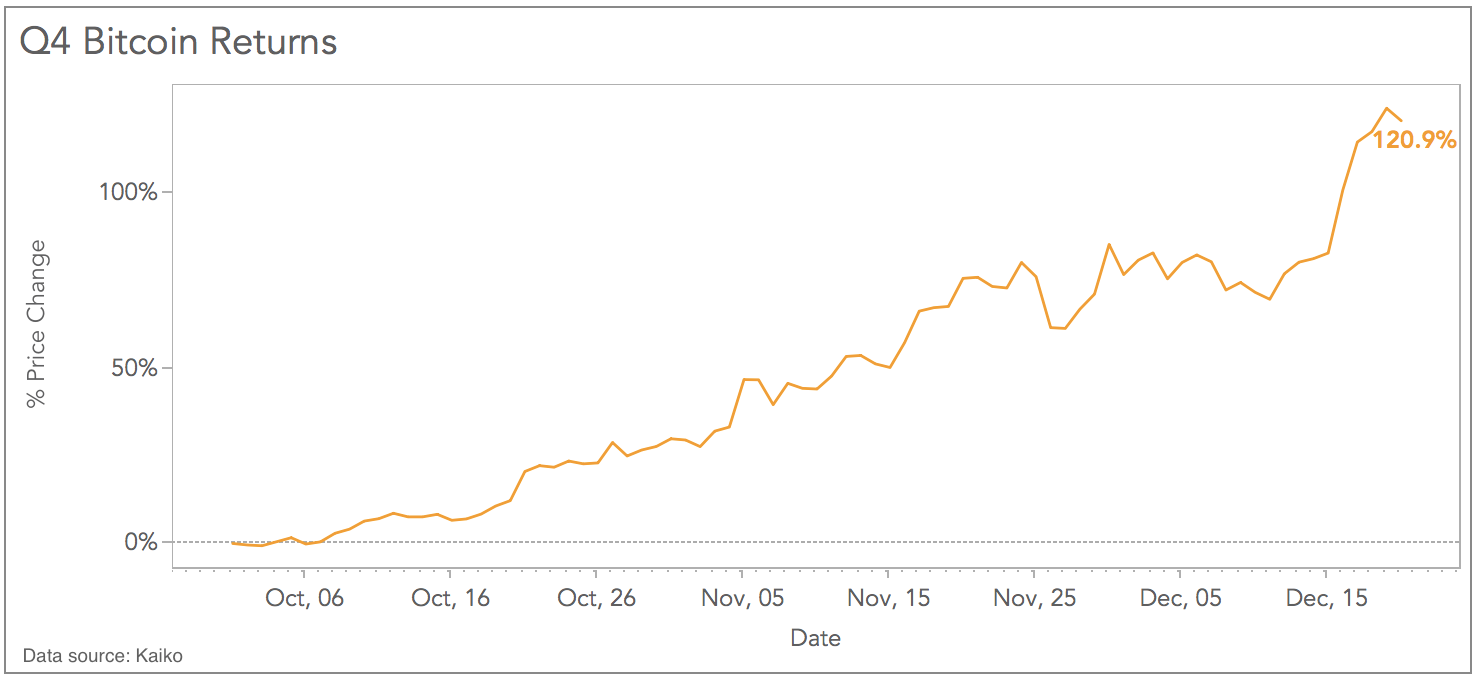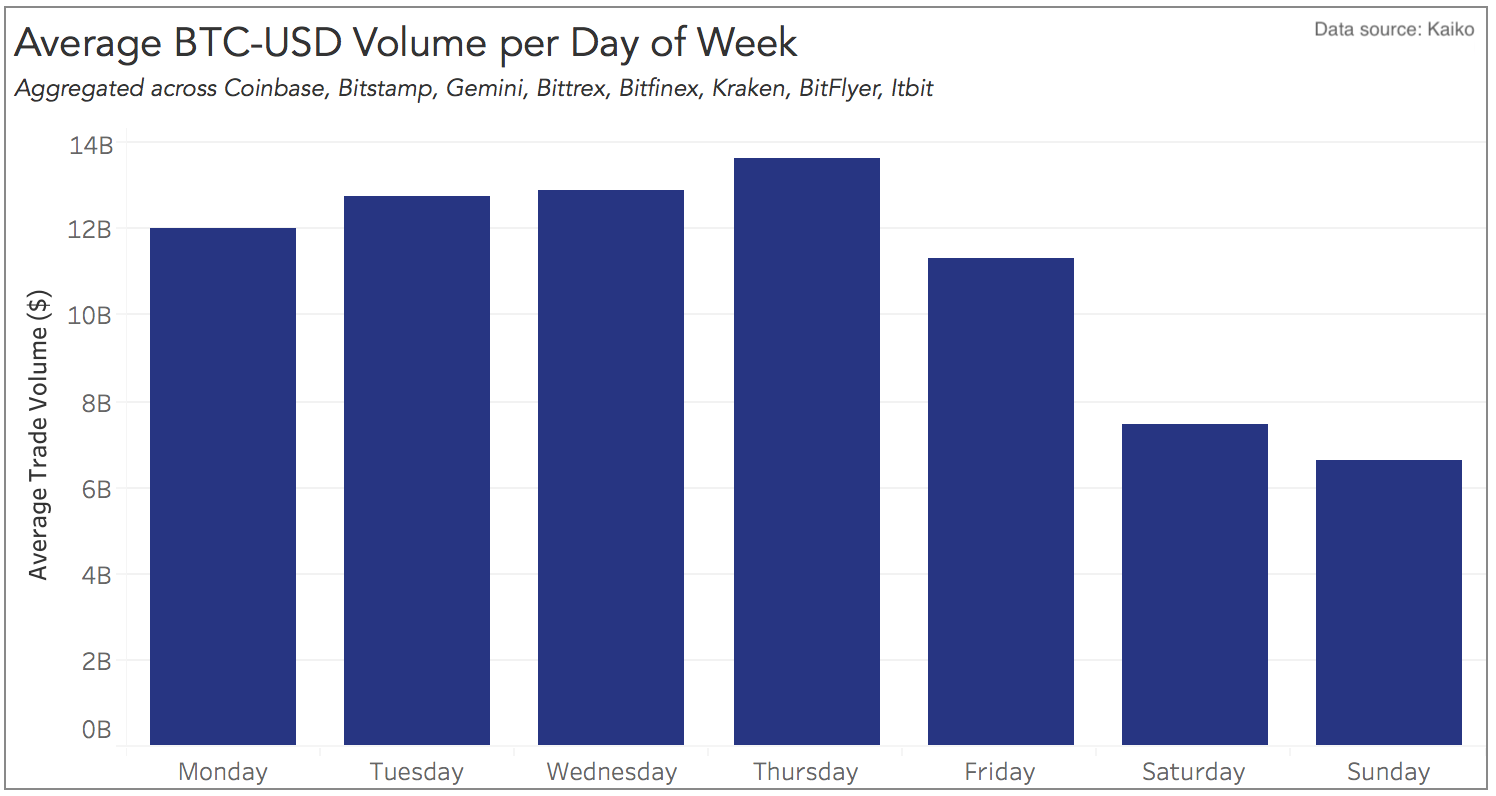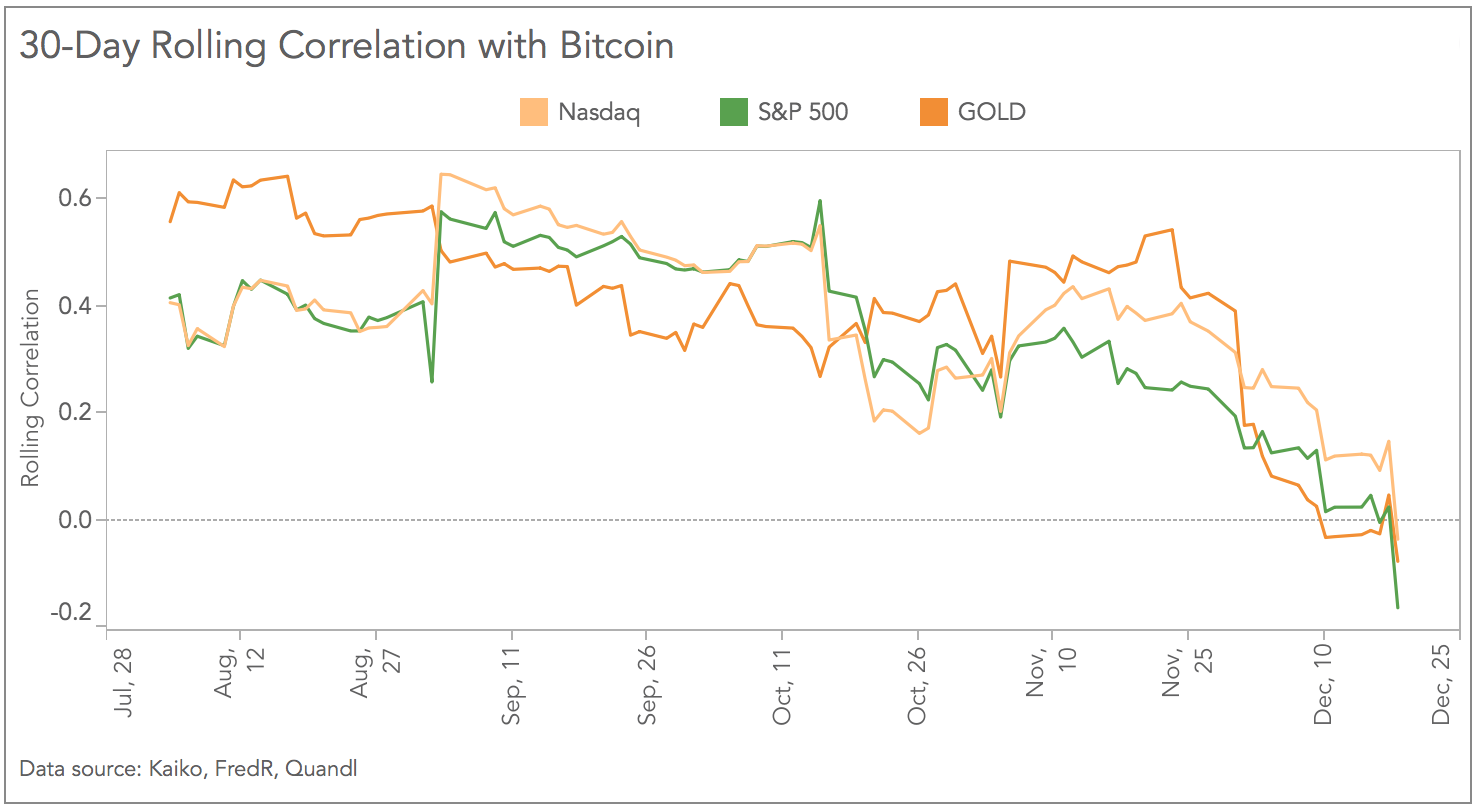A summarizing review of what has been happening at the crypto markets of the past week. A look at trending sectors, liquidity, volatility, spreads and more. The weekly report in cooperation with market data provider Kaiko.
This week in the cryptomarkets:
- Price Movements: Bitcoin's new all time high above $24k ushers in an entirely new era of price discovery as the cryptoasset enters (literally) uncharted territory.
- Trading Volume: The majority of all BTC-USD volume occurs during the week, and not on weekends, indicating an institutional presence in cryptocurrency markets.
- Order Book Liquidity: Bid and ask depth plunged and spreads nearly doubled on all exchanges as Bitcoin tore through sell walls holding it below $20k.
- Volatility and Correlations: Bitcoin's correlation with the S&P 500, Nasdaq, and Gold is now negative.
Bitcoin's new all time high

For the first time ever, Bitcoin broke $20k...and then $21k...$22k...$23k...$24k. All in one week. This time around, Bitcoin reached new all time highs on every exchange, not just a select few, thrusting anyone who has ever bought the oldest crypto-asset into profitability. Bitcoin's YTD returns are 219%, but the majority of its price appreciation has occurred throughout Q4. Since October 1st, Bitcoin has ended the day in the green 2/3 times, gaining more than 9% on two separate occasions. The asset climbed more than $4,000 over the past week, a rally of the likes not seen since 2017.
No weekend volume for Bitcoin
Trading volume for BTC-USD trading pairs is largely concentrated during the weekdays, peaking on Thursday, according to 6 months of volume data. Average weekend trading volumes are only half of weekday volumes. These trends in volume are very similar to trends for traditional financial assets, which is notable considering crypto markets are open 24/7, while equities markets are only open for limited hours during the week. These similarities indicate an institutional presence in cryptocurrency markets, with traders transacting during weekdays and taking the weekends off.
Correlation with traditional markets plummets
This week, the S&P 500's correlation with Bitcoin fell precipitously into negative territory, indicating that the two markets have a slight inverse correlation. Bitcoin reached all time highs last week while US and EU markets sold off. Part of why Bitcoin has become more attractive to institutional investors over the past three months is because of its lack of correlation with traditional markets. When the stock market falls, investors search for uncorrelated or inversely-correlated hedges, qualities that Bitcoin currently holds. The falling dollar, aggressive fiscal stimulus, and fears of inflation have also contributed to Bitcoin's growing attraction as a hedge in 2020.






